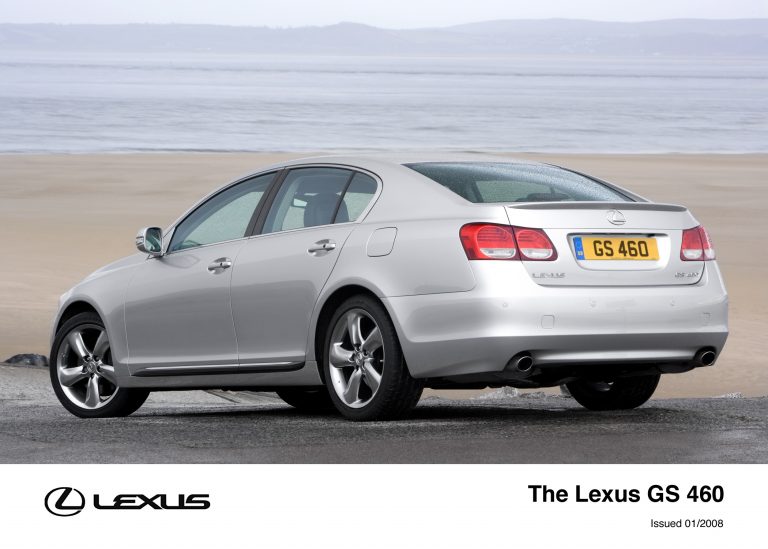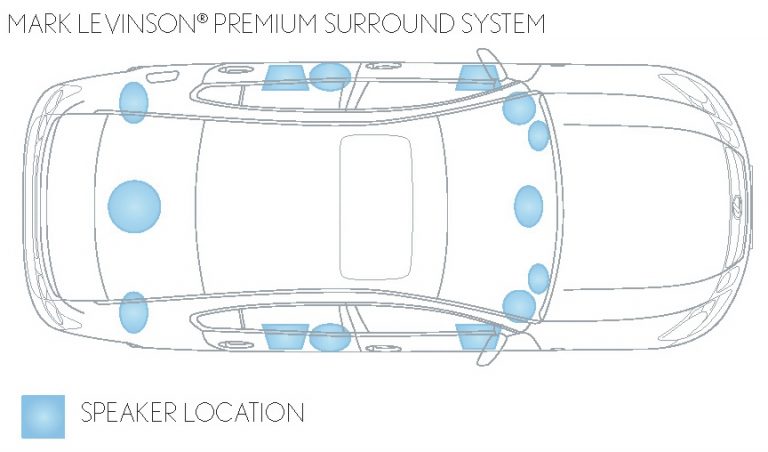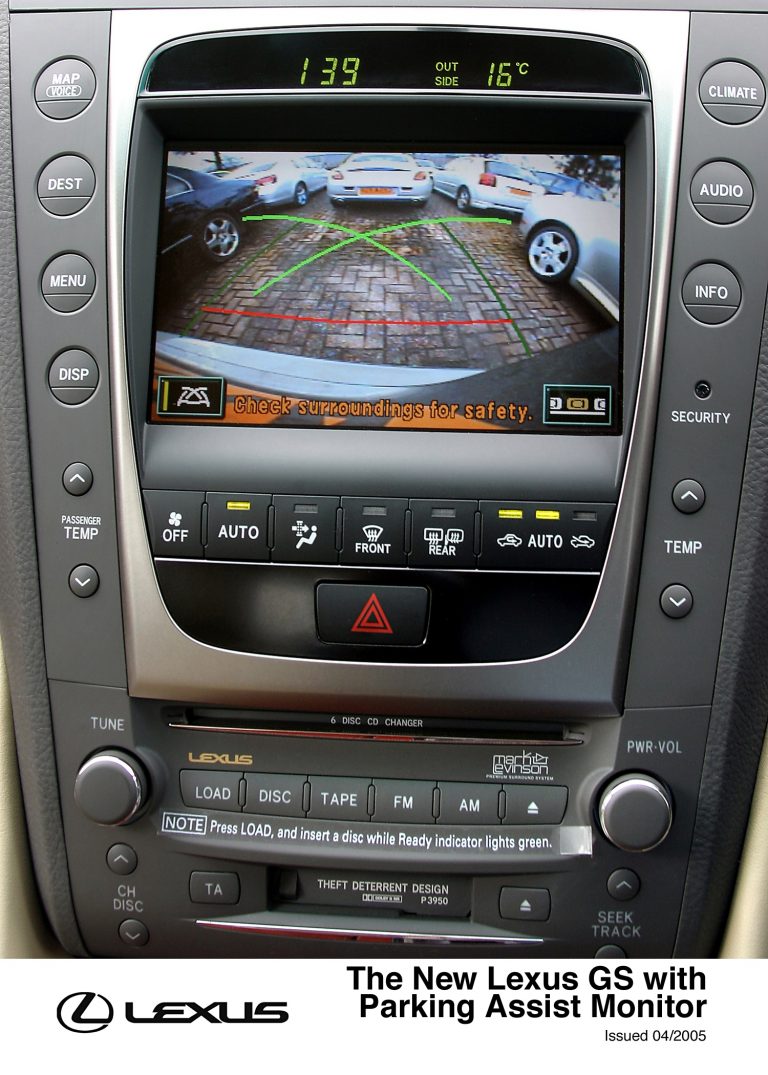Next Generation GS: Design Finesse
“The new GS is very important for the future reinforcement of the global development of the Lexus marque, showcasing our new design philosophy, and opening the doors to a new, unique and exciting future for Lexus Design”. Mr. Kengo Matsumoto, General Manager, Lexus Design Division.
- First European presentation of the new Lexus Design philosophy: “Dynamic, Simple and Elegant.”
- Choice of 4.3 litre V8 and new, 245DIN hp V6 petrol engines mated to a new 6-speed automatic transmission with manual override.
- Adaptive Variable Suspension with a dashboard switch controlled choice of four damper settings.
- Vehicle Dynamics Management (VDM) to enhance performance, traction control and vehicle stability.
- Radar controlled Pre-Collision System (PCS), to optimise seatbelt and emergency braking efficiency.
Representing the first iteration of a new, wholly innovative design philosophy and language unique to Lexus Design – the next generation GS sports sedan is also unveiled at the 2004 Geneva Motorshow.
Following the universal acclaim afforded the LF-S and LF-X concept vehicles displayed by Lexus at last October’s Tokyo Motor Show, the new GS is the first production vehicle to signal the new Lexus styling language. It integrates elegant, seamless coachwork with interior ergonomic excellence and unparalleled technical achievement in the fields of cockpit instrumentation, high performance power plants and Vehicle Dynamics Management – today’s ultimate expression of vehicle stability control systems.
The new GS will be on sale during first half of 2005 across Europe.
Exterior and interior design
Architecturally, the new GS marks a move towards a more sculptural direction in Lexus design that is dynamic, simple and elegant.
Despite being only 16 mm longer than its predecessor, the new GS combines a 50 mm longer wheelbase with short front and rear overhangs and broad shouldered wheel arches to accommodate 18″ alloys on the V8 model and create a wide, powerful stance.
The familiar, vertically latticed Lexus grille combines with four, independent, clear glass headlights and a deep, purposeful airdam with integrated foglamps to both reinforce the sporting pedigree of the new sedan and instantly identify it as a member of the new Lexus generation.
In profile, the curved, sweeping belt line, long cabin and blacked out B pillar of the new GS create a strong, dynamic “sling-shot” window graphic motif, emphasising the sculptural homogeny of the design whilst reinforcing the generous interior dimensions of the new sedan. Astern, muscular flanks taper into powerful, LED lamp clusters atop a strongly sculpted rear bumper and sporting, twin exhausts.
The creation of a unique spatial perception within the passenger compartment is central to the new Lexus design direction. The design strategy combines proportion, architecture and surface to achieve a “one motion” solution: Structural elements such as instruments, centre console, air vents, handles and armrests have been painstakingly integrated within material finishes of the highest quality to create a modern design graphic which emphasises the continuous, three-dimensional qualities of the interior space.
Engines and suspension
Along with the potent and refined 4.3 litre V8 powerplant, the new Lexus GS will also be available with a new, 245DIN hp V6 engine which replaces the current in-line 6-cylinder unit. Both V6 and V8 options are mated to an
all-new, close ratio, 6-speed automatic transmission with a sequential, manual shift override mode. The new gearbox provides faster, smoother gear changes and enhanced performance, yet also generates improved fuel economy.
A new, Adaptive Variable Suspension allows the driver to fine tune the GS ride characteristics with a choice of four damper settings ranging from Normal Mode for everyday driving comfort to Sport Mode for improved body control and precise responses to steering input whilst cornering.
Advanced safety features
In addition to Vehicle Dynamics Management (VDM), the new GS will also offer a Pre-Collision System (PCS) that can help reduce collision damage and injury. The PCS features a millimetre-wave radar sensor to detect obstacles in front of the car and a computer which monitors vehicle speed, steering angle and yaw rate. The inputs from the 2 devices help to determine in advance whether an impending collision is unavoidable. In such an eventuality, the system pre-emptively retracts all slack from the front seatbelts and adjusts the Emergency Brake Assist system for maximum braking force and optimum reduction of collision speed.
The new Lexus GS will also gain driver and front passenger knee airbags and front and rear side curtain airbags fitted as standard across the range. The advanced, Supplementary Restraint System further includes variable-force front airbags for both driver and front passenger. Sensors determine the severity on an impact and, hence, the force with which the airbags are deployed.
Intelligent and user-friendly technology
The Lexus philosophy is further reflected in a comprehensive range of technologically advanced standard equipment designed to simplify and enhance life on board.
A keyless, SmartAccess system allows the driver to leave the key fob in a pocket whilst locking and unlocking the new GS by simply touching the door handle, and switching on the engine via a push-start button. A Tyre Pressure Monitor (TPM) can detect a loss of pressure in one or more tyres, notifying the driver via a dashboard mounted warning light. The GS will also feature the acclaimed Intelligent Adaptive Front Lighting System (I-AFS), which swivels the headlamps through up to 15 degrees, helping to illuminate a bend as the driver steers into it.
A rear mounted reversing camera will also be offered on the new GS. Available in conjunction with the navigation system, it automatically projects the camera’s view astern onto the screen whenever reverse gear is engaged.
ENDS





